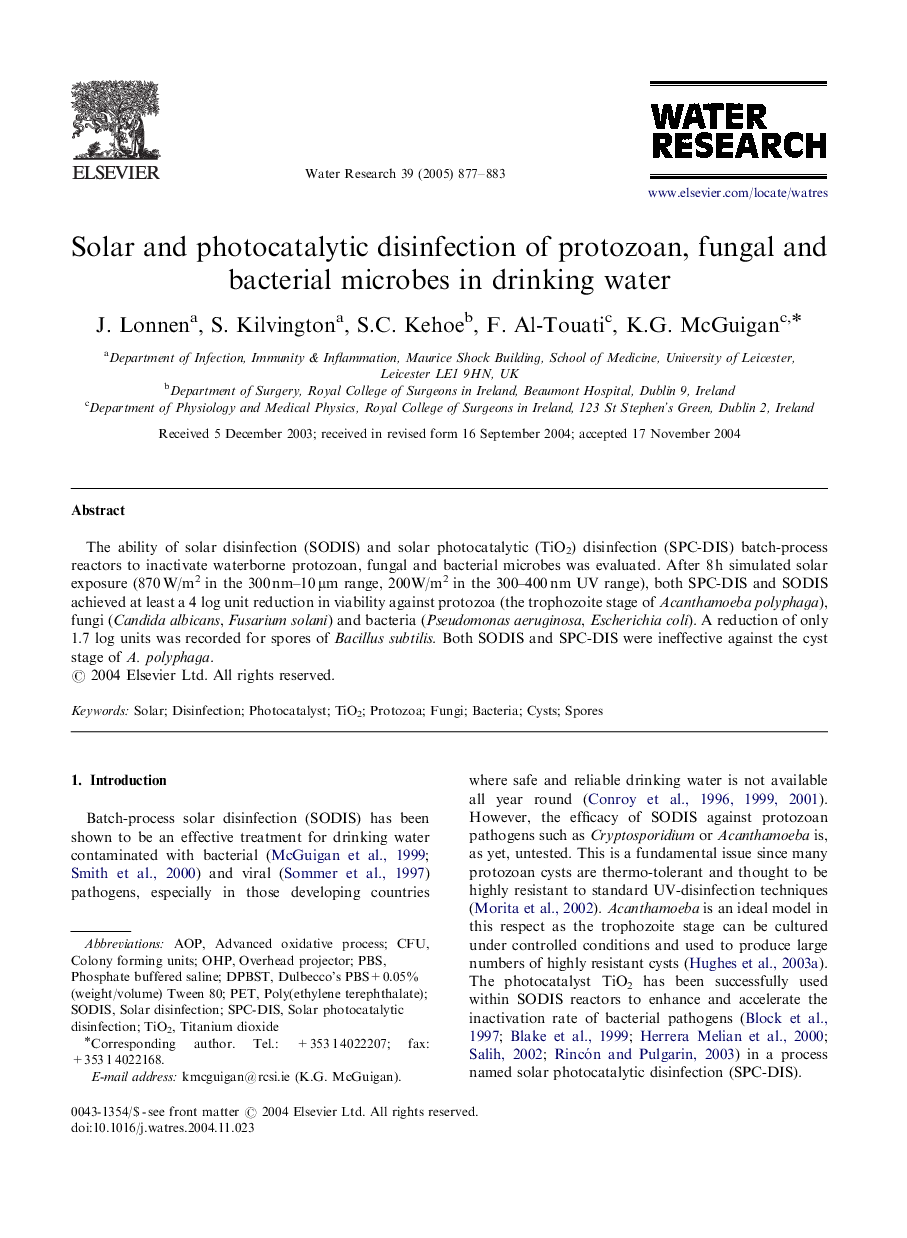| Article ID | Journal | Published Year | Pages | File Type |
|---|---|---|---|---|
| 9468295 | Water Research | 2005 | 7 Pages |
Abstract
The ability of solar disinfection (SODIS) and solar photocatalytic (TiO2) disinfection (SPC-DIS) batch-process reactors to inactivate waterborne protozoan, fungal and bacterial microbes was evaluated. After 8 h simulated solar exposure (870 W/m2 in the 300 nm-10 μm range, 200W/m2 in the 300-400 nm UV range), both SPC-DIS and SODIS achieved at least a 4 log unit reduction in viability against protozoa (the trophozoite stage of Acanthamoeba polyphaga), fungi (Candida albicans, Fusarium solani) and bacteria (Pseudomonas aeruginosa, Escherichia coli). A reduction of only 1.7 log units was recorded for spores of Bacillus subtilis. Both SODIS and SPC-DIS were ineffective against the cyst stage of A. polyphaga.
Keywords
Related Topics
Physical Sciences and Engineering
Earth and Planetary Sciences
Earth-Surface Processes
Authors
J. Lonnen, S. Kilvington, S.C. Kehoe, F. Al-Touati, K.G. McGuigan,
